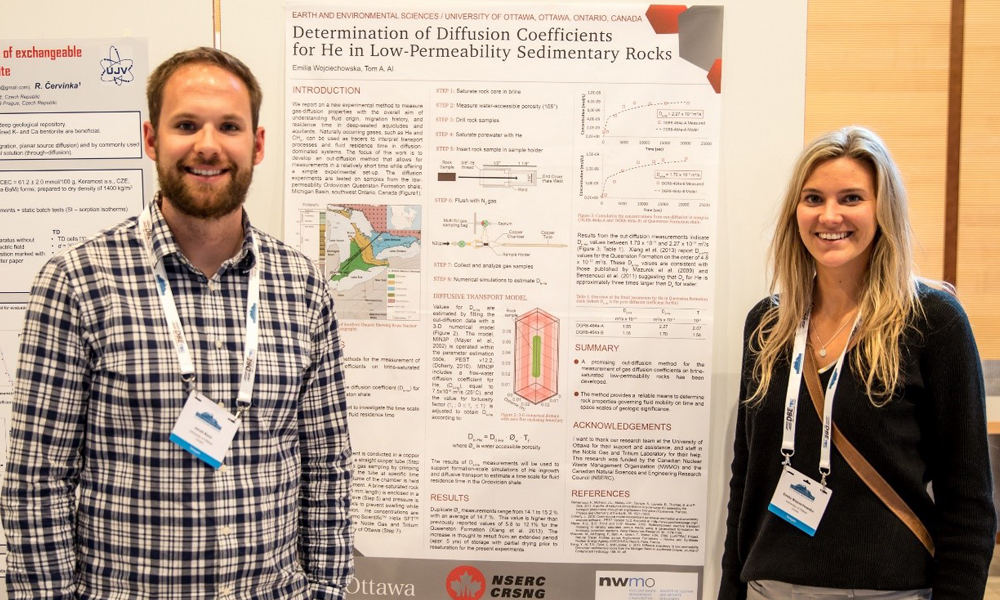Two graduate students from University of Ottawa’s Advanced Research Complex (ARC) presented their findings at the 7th Clay Conference 2017 in Davos, Switzerland this fall.
Jacob Nunn and Emilia Wojciechowska are researching how natural clay and clay-rich rock formations deep underground act as barriers to the sub-surface movement of chemical elements. Their work is sponsored by the Nuclear Waste Management Organization (NWMO) and the Natural Sciences and Engineering Research Council of Canada (NSERC).
This research is important in advancing the basis to understand the integrity of ancient natural bedrock formations as long-lasting protective barriers. It augments an existing body of knowledge on the suitability of these formations to safely host the NWMO’s Adaptive Phased Management (APM) deep geological repository concept.
The deep geological repository is a multi-barrier system designed to safely contain and isolate used nuclear fuel over the long-term from people and the environment.

